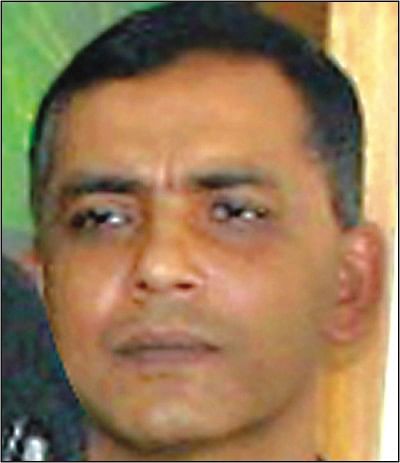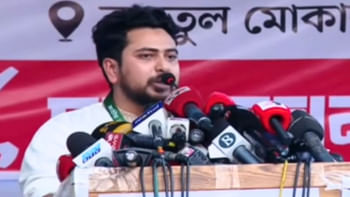<i>Terror struck back at its buster</i>

The February carnage that played out in the guise of mutiny at the BDR Headquarters bears the hallmarks of terror attacks.
One of the brightest army officers who died in the "armed rebellion" was Col Gulzar Uddin Ahmed, best known for his efficient detection and operations against Islamist militants and terrorists.
The Pakistani occupation force had taken the life of his civil servant father during the War of Liberation in 1971. On February 25 at Pilkhana in an independent Bangladesh, Gulzar was killed -- his body found mutilated beyond recognition in a grim discovery that parallels a grisly death fed by deep-seated grudge.
Some government high-ups pointed to "elements of terrorism" in the carnage, but all spoke on condition of anonymity because of the sensitivity of the issue.
"A disciplined force cannot take to such brutality. It appears terror elements were at play," one of them told The Daily Star.
One probable route for the masterminds of the killings was to spur the border guards with the theories of "grievances" and money, the government high-ups believe.
Some believe "terror elements" infiltrated the BDR through the route of recruitment in recent years.
Gulzar was known as one of the brightest army officers of the country. His voice was last heard by friends and colleagues over cellphone when the killings began inside the Pilkhana Headquarters around 9:00am.
Soon after the massacre coupled with a hostage situation where a few hundred people remained inside Pilkhana, rescuers found as many as 74 bodies and traced 51 army officers among them.
But Gulzar was on the missing list.
There were five unidentified bodies rescued from mass graves or sewers. These bodies bear the marks of severe brutality. Only a DNA test could confirm who is who. Gulzar's family could not say if one of those bodies was his.
Organic samples from these bodies were collected and close relatives of the missing army officers also gave blood samples for the DNA testing. Samples were cross-checked with Gulzar's 14-year-old daughter Zahin Tasnia's genetic imprint.
On Tuesday, two of the DNA test results popped up, one identifying Lt Col Elahi Monjur Chowdhury and the other Gulzar.
Gulzar's mutilated body was wrongly identified initially by another family and then his body was kept at the Combined Military Hospital. Sources say everyone is now confused whether his body was recovered from the sewers or a mass grave.
Sources say the killers smashed his body. "Some of his relatives were too afraid to see the decomposing, ruined body," says a rescuer.
"Those who saw his body said his eyes might have been gouged out; his spinal cord was broken and his body bears the mark of terrible torture. Apparently, he was killed by gunshots," the rescuer adds.
A family member said his face was bloated. "It was impossible for anyone to recognise him from seeing that face."
On February 25, when the mutiny degenerated into a bloodbath inside the BDR HQ, Gulzar had no time to call his family. He last saw his family members at his Dhaka home earlier that morning.
In a frantic bid to resist the "mutineers", Gulzar called his former colleagues at the Rapid Action Battalion (Rab) repeatedly, seeking help.
"He called me around 9:30am saying that random gunshots are being fired inside Pilkhana and that we should do something immediately," recalls Col Rezanur Rahman Khan, additional director general (ADG) of Rab, who replaced Gulzar in late January.
"By then we already received news about the incidents and were mobilising our troops. We were on the move and I think I told him that we were already mobilising our men," Khan says. "I have heard Gulzar called some other officers too."
Rab Deputy Director in-charge of Bomb Squad Maj Momtajur Rahman is one such officer who spoke to Gulzar by phone
"Around 9:40am, upon learning about the incident I called him. He told me: 'Bring in two platoons and make an advance, these people will escape.' Gulzar had said they [the killers] don't seem to be organised," said Rahman, who assured him of Rab's move.
"He called me back around 10:10am for a fast move. I asked him what condition he was in. He said he was lying on the floor of the Darbar Hall [where the killing had begun]," Rahman added.
That was the last call.
Rahman rang him back many times, but the calls went unanswered. At one point, the phone was unreachable, he says.
On that day, Rab mobilised its forces around 10:30am near Pilkhana. The army also sent out troops around 12noon. But neither Rab, nor the army could enter the HQ as the killers had taken advantageous position by the gates and behind walls and were ruthlessly firing machinegun bullets that killed three passers-by.
CAREER
When Rab was formed on March 26, 2004, Gulzar took charge of the commanding officer of Rab-3 on deputation from the Bangladesh Army.
As a Rab officer, his first sensational case was handling the grenade attack on British High Commissioner Anwar Choudhury in May 2004. Gulzar was a member of the government committee formed to investigate the attacks.
In 2005, Gulzar was appointed the head of the Intelligence Unit of Rab from where he took up several major assignments. Of them, the most important was spearheading the investigation and operation against the Islamist militants and terrorists.
He played a major role in investigation into all other major terror attacks.
Gulzar led the drive against Jama'atul Mujahideen Bangladesh (JMB) terrorists and succeeded in detecting and arresting the dreaded Bangla Bhai, JMB chief Shaekh Abdur Rahman and their armed followers.
He also spearheaded the drive against Harkatul Jihad Al Islami (Huji), one of the largest Islamist militant groups found to be involved with the many bomb attacks, including the grenade attack on Sheikh Hasina.
Because of his knowledge about the militants' network, Gulzar was a revered name in the country's law-enforcement and defence agencies.
At the end of 2006, Gulzar was promoted to colonel and then transferred to BDR. However, within the first one or two months of Fakhruddin Ahmed's caretaker government, he was brought back to Rab as an additional DG.
As the Awami League government's explicit commitments include a fight against terrorism and religious extremists, it was expected that the government would benefit from Gulzar's skills and knowledge on the matter.
But he was transferred to BDR as the commander of Sylhet Sector at the end of January.
After a brief vacation, he joined BDR on February 3. As per the convention, all sector commanders should join the conference at the Darbar Hall on the occasion of the BDR Week. He and 11 other sector commanders took part in it. None of them survived.
Col Rezanur Rahman Khan believes Gulzar is a "legend" in the anti-terrorist and anti-militant drives. His skill, professionalism, knowledge and sincerity are beyond question. "His commitment was unparallel," Khan says.
"We are taking his absence as a challenge. We will continue the task he has left the country with and we will uphold what he was trying to do," Khan adds.
Rab DG Hasan Mahmood Khandaker says: "He was all along a resourceful and professional officer in regards to militancy, terrorism or any heinous acts. He was honest down to the core."
"Gulzar had a high standard of commitment. His absence is a great loss for the nation," Chowdhury adds.
Gulzar's father Anwar Uddin Ahmed was a civil servant working at the Ordnance Factory in Gazipur under the defence ministry.
On April 4, 1971, the Pakistan army picked up Ahmed along with around 20-25 officers of the factory along with their families. They were brought to the parliament area in Dhaka.
The Pakistani army then separated the men from their families to kill them in a hail of bullets.
The Pakistani forces told the families that the men had been kept with the army for questioning and asked them to leave.
Anwar Uddin had never come back.

 For all latest news, follow The Daily Star's Google News channel.
For all latest news, follow The Daily Star's Google News channel. 



Comments